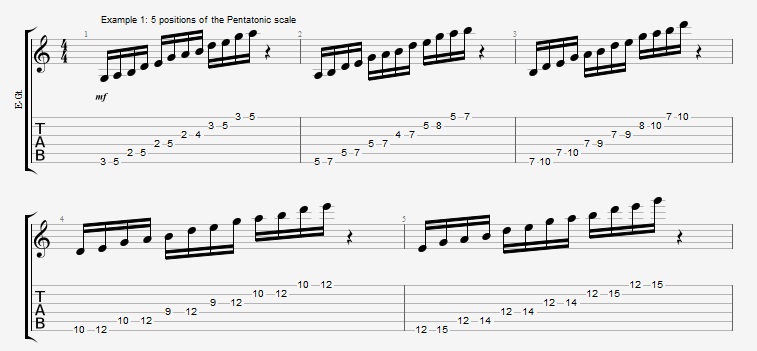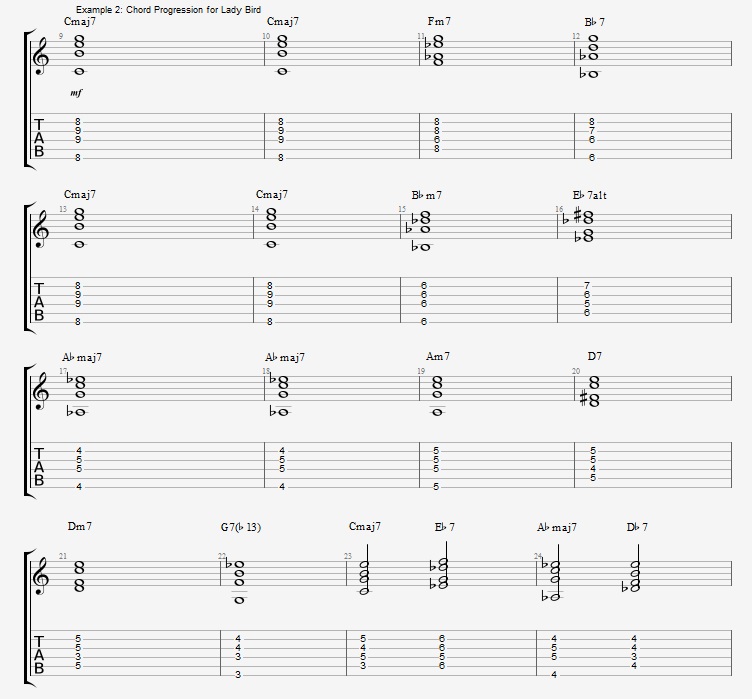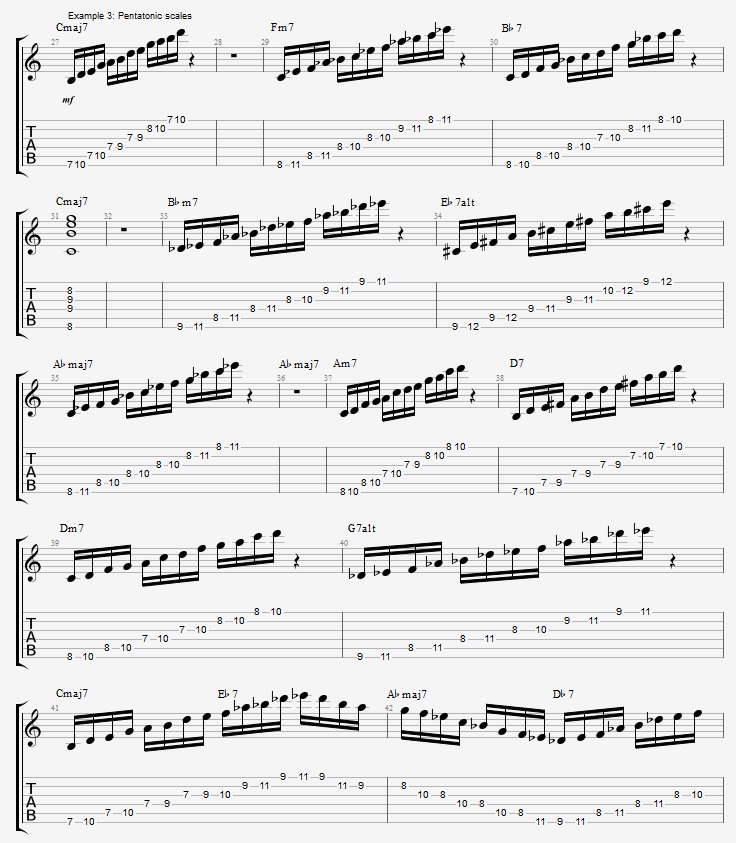JENS LARSEN "Playing a Jazz Standard with Pentatonic Scales"
- Details
- Category: Uncategorised
- Published on Saturday, 09 April 2016 12:15
- Written by Jens Larsen
In my fifth lesson, I want to show you how you might apply the material I made in previous lessons on pentatonic scales on a jazz standard and use that approach to play the whole thing.
The focus in this lesson is to play through the progression of the Tadd Dameron composition “Lady Bird” by only using pentatonic scales.
First make sure that you know all 5 positions of the pentatonic scale, since you’ll need them to be able to play the song in one position. Here they are in the key of E minor:

You can also download a scale chart here: http://bit.ly/PDFdownloads
I chose Lady Bird partly because it is only 16 bars and also because it has a fairly simple set of chords so most progressions are neatly II V movements and therefore easy to apply pentatonic scales to. With a more complex progression it is still possible but a little more demanding. I might try to do that in a later lesson.
Let’s first go over the progression. In example 2 it’s written out with basic voicings. It is probably a good idea to play through it and get used to the sound of the chords if you are not familiar with the song.
To sum it up Lady Bird is a song in C major. It moves to the IVminor sound twice: Fm7-Bb7 and With a cadence to AbMaj. From there on it moves to the dominant of the dominant (Am7 D7) and then to a II V (Dm7 G7). The turnaround is often used in other songs as well and is actually referred to as the Lady Bird turnaround. It can also be seen as a possible stepping stone towards Giant Steps.
Now that we have the progression we can start adding scales to it. In general I’ve chosen the simplest and obvious choices so that you can still hear the harmony.
On the Cmaj7 I am playing an E minor pentatonic which is the scale from the 3rd of the chord. On the Fm7 I simply use F minor pentatonic, and the Bb7 is an unaltered dominant so the best choice is Bb major or G minor pentatonic. C major is again using E minor pentatonic.
Bbm7 Eb7alt is using first a Bb minor and then an A major or F# minor pentatonic scale. The Eb7 alt can be seen as an A7(9,13) with an Eb in the bass which is why the A major pentatonic scale is a good choice for that chord. On the AbMaj7 I am using the same approach as the C chord so the scale from the 3rd. For the AbMaj7 that gives us a C minor pentatonic scale.
On the Am7 D7 it is again A minor to B minor pentatonic, and the Dm7 G7alt is again D minor pentatonic and Bb minor pentatonic.
In the turnaround I use E minor on the CMaj7 chord, Bb minor on the Eb7 C minor on the Ab chord and Bb minor on the Db7 chord. The only choice that needs a bit of explanation in this case is on the Eb7. It seems (to me anyway) better to have a different scale for each chord in the turnaround and since the Eb7 is not altered the logical choice would be C minor, but since I am using that on the AbMaj7 too I chose to play the Bbm scale which is actually an Eb7sus4, but works well in the context.
In example 3 you’ll see how I used the 5 positions to lay out all scales around the 7th position which gives you a good way to improvise and get from one chord to the next in a logical way. That is what I am trying to do when I play the solo.
I hope you can use the scales on standards or other progressions as a way to expand the melodic material you can pull from in a solo.
You can download the examples here:
Playing a Jazz Standard with Pentatonic Scales
Please subscribe to my YouTube channel and feel free to connect with me via Facebook, Google+ or Twitter to keep up to date with new lessons, concerts and releases.

Please check out the interview GuitarMania conducted with Jens, and GuitarMania's review of TRAEBEN’s new record „Looking at the Storm“ (in German language) here.
For further information and material, please refer below
TRAEBEN Soundcloud
www.traeben.com
http://jenslarsen.nl
Archived Lessons
Lesson 1: Jazz Chord Survial Kit
Lesson 2: Diminished Scale usage
Lesson 4: Jazz Chord Essentials - Drop 2 voicings part 1




